WOMAN ON A LEDGE AT No. 97 MACON ST (1953)
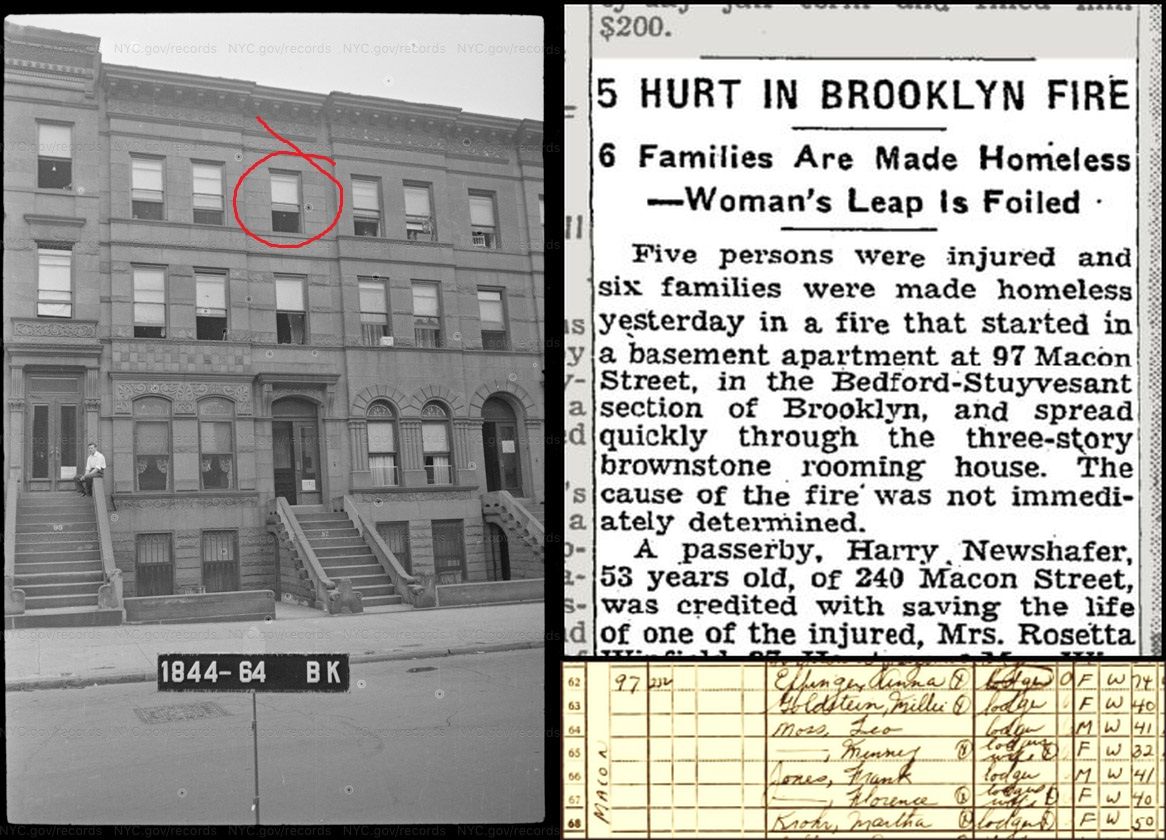
Brownstone Detectives investigates the history of our clients’ homes.
The story you are about to read was composed from research conducted in the course of one of those investigations.
Do you know the history of YOUR house?
********************************************************************************************************************************
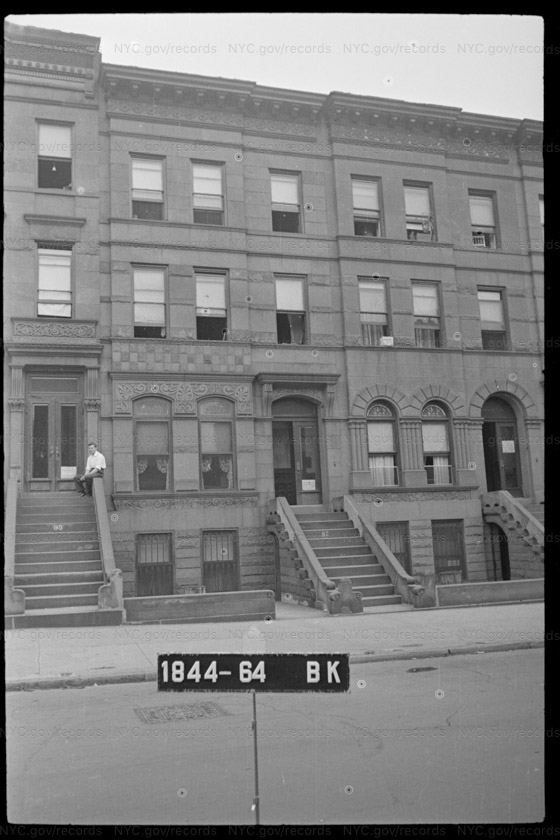
All houses have a history.
Those of a certain age clearly have it in spades.
One part of any house’s history are those incidents that occur without planning or preordination. They can be unpleasant to know.
One of those unplanned incidents, is the housefire of unknown origin that spreads uncontrollably through a residence.
One such fire which spread throughout a building, took place on a cold January day in 1953 in a rooming house on Bedford-Stuyvesant’s No. 97 Macon Street.
FROM A SINGLE-FAMILY TO A ROOMING HOUSE
By 1953, Bedford-Stuyvesant’s brownstone stock was ageing – and it was not doing so gracefully. A large percentage of this section of Brooklyn’s brownstones had passed their semicentennial and were still wired and plumbed as they had been when they were constructed.
While many of them had been maintained through the first 30-40 years, as earlier owners moved out and were acquired by owners who began to rent out rooms, however, these newer owners put little money into their maintenance, preferring to squeeze as much profit as possible out of their rent rolls.
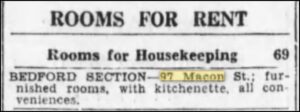
The Depression-era programs of redlining and blockbusting brought many unsavory characters into the business of making money through the purchase and management of brownstones in black-majority sections – as well as those becoming so.
For most black owners of brownstones, the negative side-effects of usurious mortgages agreements (where, for instance, if an owner missed a single payment, their rate would skyrocket to a usually unaffordable 25%, and if they could not pay that, then their house would go into foreclosure and revert to the, usually, white mortgage holder – and the process would continue), made it necessary to break up the homes into lodging houses in order to make enough income to pay these rates.
By 1940 – and probably even before then – No. 97 had become a lodging house. According to Ancestry.com, the residence was owned by an absentee landlord and contained seven “lodgers” (much better than at No. 99 next door with four families and 3 lodgers – a total of 13 persons) having such varied professions as milliner, carnival barker, truck driver, and dressmaker.

By 1953, with brownstone owners filling their brownstones with more and more residents, No. 97 was likely to contain even more bodies.
By 1964, the building contained 9 apartments, three class A apartments and six class B sleeping rooms (which, according to the City of New York, are “occupied, as a rule transiently, as the more or less temporary abode of individuals or families,” and had shared baths and in-room kitchenettes or hot plates).
As a matter of fact, the Brooklyn Daily Eagle reported in a 1953 story, that six families were made homeless by a blaze in No. 97. With an average of 4 people a family, that would indicate that the rooming house was occupied by approximately 24 residents.
MRS. WINFIELD, PERCHED ON A TOP FLOOR LEDGE…
It is a part of the history of a house that does not shine, in and of itself. It is a part, no less, however, that tells part of the tale of the property – a fire which raged through the structure.
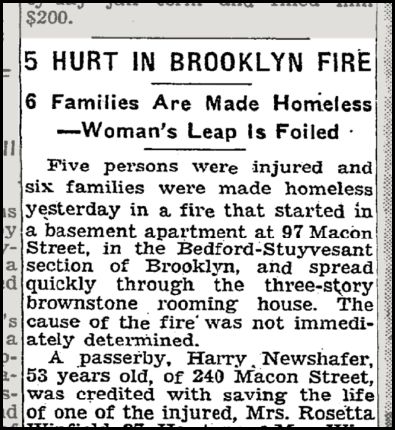
On 9 January 1953 a fire that started in a basement apartment at No. 97 Macon Street and spread quickly through the three story brownstone rooming house. The cause of the fire was, at the time, “not immediately determined,” but it could be guessed at.
A passerby, Harry Newshafer, 52, a linoleum worker of No. 240 Macon Street, “was a hero in the blaze. He joined in warning tenants.
“He then climbed the stairs of an adjacent building – likely No. 99 Macon St. – and restrained Mrs. Rosetta Winfield by grasping her arm as she was about to leap from the top-floor ledge. Police said he saved her life.
She was rescued minutes later by members of Hook and Ladder 111.
While no one was killed in the blaze, there were four injured who were taken to Kings County Hospital for treatment of smoke poisoning and cuts and bruises. They were Mrs. Winfield, Frank McNichols, 40, and his wife, Frances, 21, and Afford Quick, 78.
Miss Kay Chestnut, 26, a top-floor tenant, was treated at the scene.
———————————————————————————————————————–
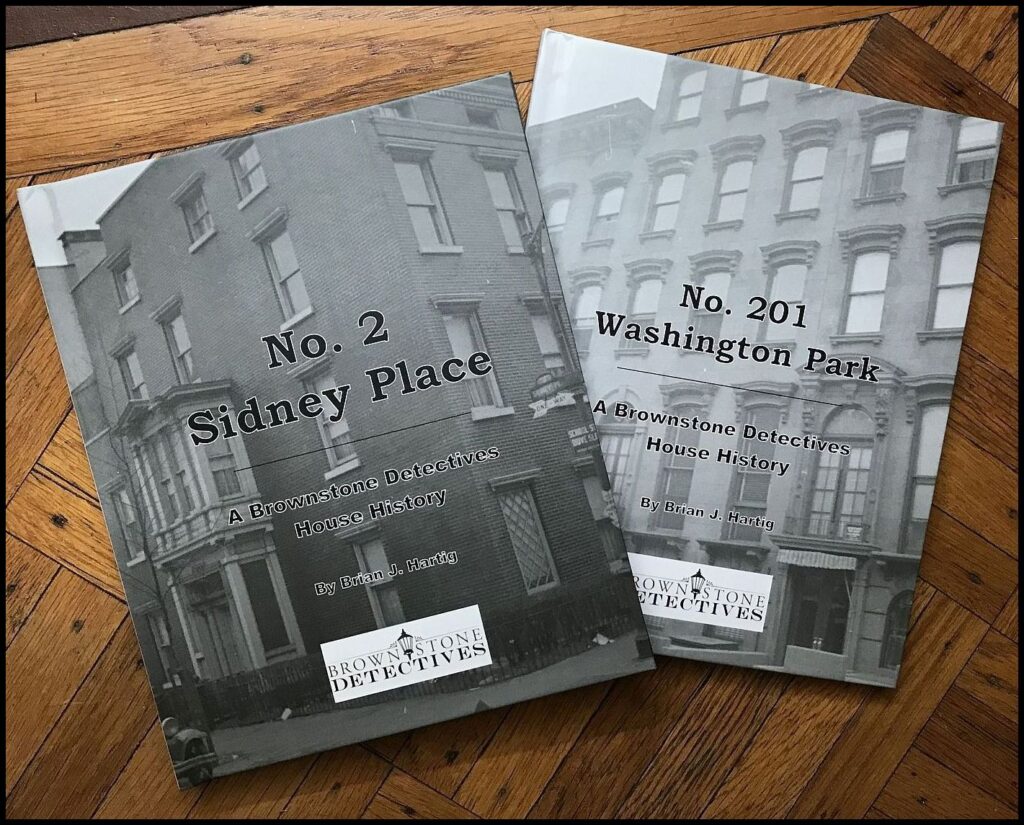 Brownstone Detectives is an historic property research agency. Our mission is to document and save the histories of our clients’ homes. From our research, we produce our celebrated House History Books and House History Reports. Contact us today to begin discovering the history of your home.
Brownstone Detectives is an historic property research agency. Our mission is to document and save the histories of our clients’ homes. From our research, we produce our celebrated House History Books and House History Reports. Contact us today to begin discovering the history of your home.